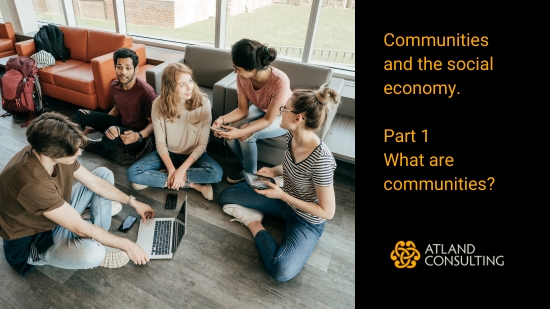Is community manager the same as community building? What do you need a community or a company for when you have an endless stream of social networks at your disposal? Who can afford to spend time doing that? Using tools such as Discord, Telegram or WhatsApp, professional and civic communities are proliferating, sharing all kinds of interests.
There is a great distrust of new English names that signal needs, trends and even professions in the business world. This is normal. It was already the case before the emergence of digital tools and it has multiplied after their appearance.
With the advent of social networks, communities were supposed to have been created around companies, businesses and entities of all kinds. This was the case in the beginning, but the successive transformations of social networks have turned them into a commoditised space that has led to a shift from communities to audiences. Interaction has been largely lost and people have become passive recipients of the message who, if inspired, can respond or interact.
Social networks have been losing momentum due to over-stimulation and excessive advertising that almost completely obscures the information and profiles that people are interested in. It is increasingly difficult to fulfil the objectives that led us to adopt them. This has led to a loss of users. However, people have not run out of digital, but they miss that capacity for connection that was the great promise of the internet.
Finding space for exchange and dialogue, places with a shared purpose and above all friendly places where every interaction is not met with flippant or simple arguments, is still something people want.
This is the role that communities have adopted.
They are places of professional exchange, spaces for activism, safe places to share experiences or places on the web where collaboration and knowledge are sought. It is the initial spirit that nourished the network: the great conversation, the “machine” as a tool for the most human thing, which is to find our peers.
But this return to the origins no longer takes us new. We have learned, we have experience and we know how to work and take care of things so that they last and, above all, we know how to make the most of them without betraying the reason that brought them into being.
This is the moment when communities no longer appear but are built.
Social economy organisations have in communities a tool and a strategy that should come naturally to them. The purpose, the need to restore a human scale to the economy and the search for a collective good are the values that in many cases generate and sustain these communities.
In addition, there are two other elements that are very important for the social economy: the need to make known the differences in the way they understand business and work and to have a support network when it comes to growing and launching new projects.
Communities and the social economy.
There are many types of communities. A first classification is by access: they can be open or closed, and the latter by invitation or payment.
The other qualification criterion is by content and the list of types of organisation is as long as the intentions and needs of a group of people who decide to join.
We have already talked in previous posts about the difficulties that social economy organisations have in order to grow and be sustainable as a business: maintaining the organisational culture, that the target public understands how they work and that the different administrative and financial entities understand how they work.
Let’s take it one step at a time.
It is easy to find people with skills. It is not so easy to find people who are able to fit into an organisation that is not a classic company. When companies have internal communities within the office suite, it is much easier for them to take on that organisational culture. Either because it is shared by colleagues, or with dynamics and documentation to understand, the internalisation of values will be progressive and personalised, which helps a lot to make it more stable over time.
Everything is better understood when it is explained to you by your peers, and there is no better way to “enter” than if everyone helps you with the arrival.
Collaborators, volunteers and even clients. When our organisation opens itself up to the outside world, it exposes itself too much and we run the risk of making a huge effort for nothing. When we organically grow a community based on very specific objectives or interests, the possibilities of obtaining a return for our organisation increase. Building customer loyalty, increasing the volunteer base and maintaining it are options that the creation and management of communities can facilitate.
If you have sponsors or patrons, we can guarantee that your actions will reach people with a real interest and not generic audiences.



